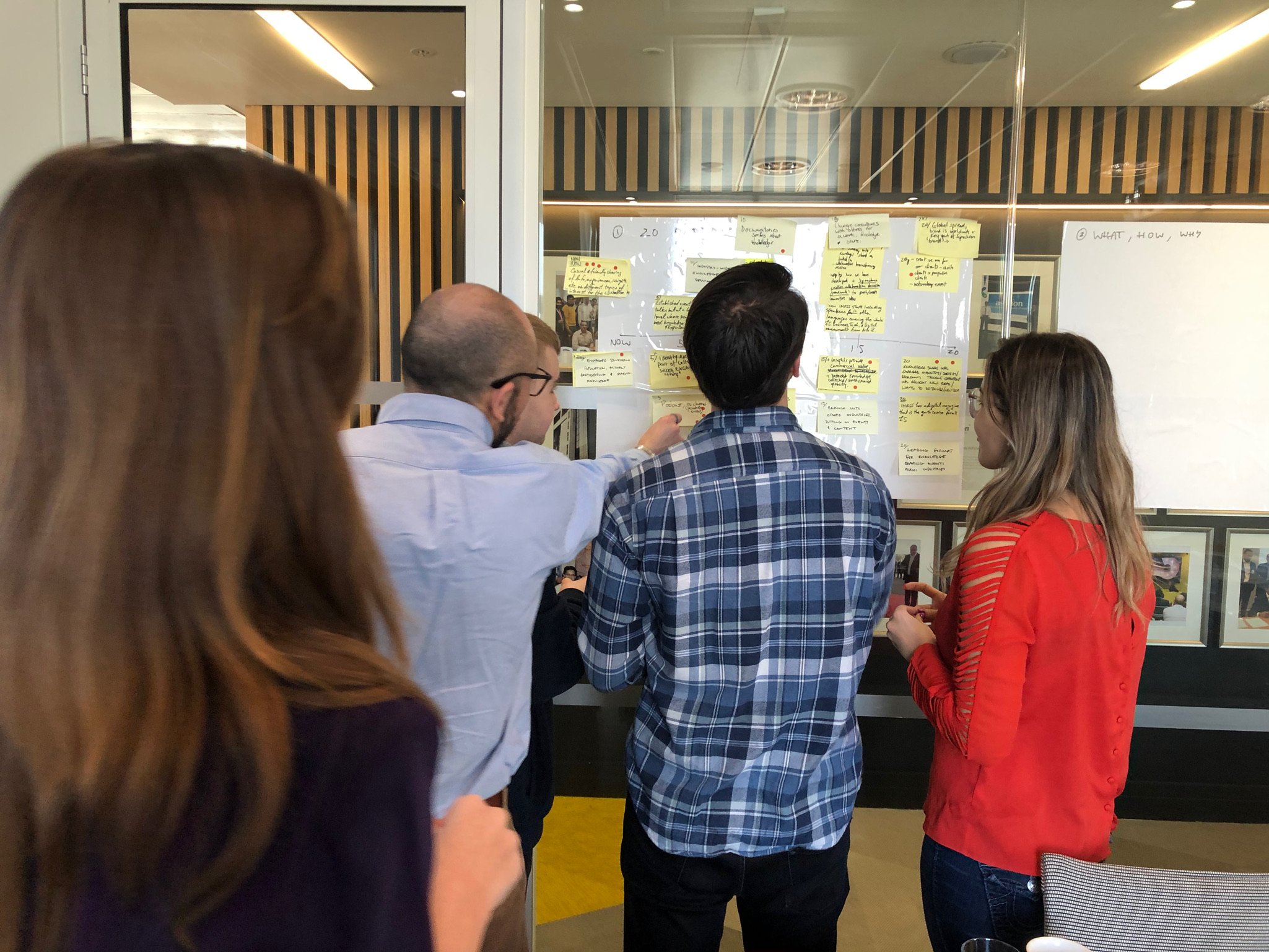Multiple Browser Based—Interoperable Data Products for Capital Markets
Designing a suite of applications to validate and demonstrate value during the organization's transition to a cloud-based Platform-as-a-Service environment.
Client: TD Securities
Proposition: Product Discovery & Design
Industry: Financial Services
Team & Timeframe:
Over a 12-month period, I partnered with domain proxy users acting as product owners to address the diverse needs of capital markets professionals, from junior analysts to senior bankers. My role encompassed discovery and requirements gathering, experience mapping, and data architecture design. I defined the overarching interaction model and collaborated closely with the platform team to ensure feasibility and alignment with technical capabilities.
Key Activities:
Facilitating executive workshops and ideation sessions.
Developing interaction models.
Establishing a design system and scalable patterns.
Demoing to users and iterating/prioritizing feedback.
Experience design strategy in collaboration with platform team.
Delivering an executive pitch, including POC in code.
RESULTS
58%
Increase in adoption amongst junior bankers significantly reduced the time spent analyzing data, while senior bankers halved the time required to prepare pitches.
40% to 98%
Adoption soared—a testament to the clarity and elegance of the apps and the interconnected experiences they provided.
Shaping Design and Platform Strategies
Driving the creation of elegant workflows and patterns that champion exceptional user experiences
TD Securities stands as a prominent investment bank, offering a comprehensive range of corporate and investment banking as well as capital markets products and services to a global clientele encompassing corporate, government, and institutional entities. Recognizing an opportunity for enhancement, the business innovation team at TD Securities sought to elevate the daily tasks of their bankers. Their approach involved drawing inspiration from the positive digital experiences prevalent in our personal lives and seamlessly incorporating those elements into the investment banking experience.
Problem Space—Investment bankers within Capital Markets face mounting complexities in managing deals and navigating global financial systems. Their current landscape is hindered by siloed products and tools, many of which are disconnected or duplicative, leading to inefficiencies that ripple across the domain. These fragmented systems impede collaboration, slow decision-making, and create friction in critical workflows.
Figure 1: Design Sprint Workshops

Objective—The objective was to deeply understand the stakeholders engaged with the products already in production, uncovering what resonated and what faltered. The goal was to identify the core challenges and areas where the experience could be refined. Among these, the "Order-Book" emerged as the most pivotal. It allowed bankers to view client deals and aggregate essential data—total deal size, over-subscription, and top deals. This experience was not isolated; it intersected with other products, making it the natural starting point for the strategy. By focusing on it first, we aimed to create a seamless, intuitive foundation that would enhance the entire suite, delivering clarity and simplicity where complexity once resided.
Outcomes—We created a thoughtful and scalable framework, along with well-designed components, enabling the technology teams to accelerate the design and development of the new interop platform. For junior bankers, the time spent analyzing data was dramatically reduced, allowing them to focus on insights rather than processes. Senior bankers experienced a transformative shift, halving the time required to prepare pitches and empowering them to engage clients with greater precision and speed.
Solution—I created a series of thoughtfully designed workshops, which served as the foundation for each product owner and their respective product. These workshops enabled me to deeply collaborate with stakeholders, uncovering the intricacies of the data architecture from the user's perspective. By understanding how to accommodate vast volumes of data and elevate the overall interaction model, we leveraged the full potential of the interop platform.
As a shared vision of the desired product experience emerged, I onboarded additional designers and engineers, enabling us to scale our efforts effectively as I moved on to the next product. This approach resulted in the creation of fifteen products, with four successfully launched into production within 12 months—a testament to the carefully considered design and execution of the process.
Figure 1.2: The Interoperable Data Products are designed not as isolated entities but as harmonious components of a larger, interconnected system.
Figure 1.3: Each design pattern represents a solution that has been refined through observation, iteration, and the unyielding pursuit of simplicity.
Figure 1.4: We designed a responsive toolbar for each app, thoughtfully crafted to adapt seamlessly to small, medium, and large container sizes. This approach ensures that key functionality is progressively revealed, aligning effortlessly with the app's active focus and naturally capturing the user's attention.
MORE RESULTS—








